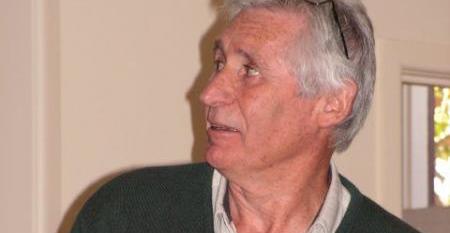
Yarra Bend Park
You are here

Karina introduced Peter Lynch from Parks Victoria to speak to us about Yarra Bend Park.Peter explained Parks Victoria manages large amounts of land within the metropolitan area, which was formerly managed by Melbourne Water. Around 18% of the state is under their jurisdiction. Peter showed us a map displaying the remaining bushland surrounding Melbourne. Large areas of bushland have been lost to housing. To the northeast of Melbourne, natural vegetation surrounding the Yarra River provides a habitat for birds, animals and plants.
Peter looks after the area from Yarra Bend Park in Kew, extending to Westerfolds Park in Templestowe – this land is important to Melbourne as it connects to the middle Yarra Parklands from Warrandyte to Kinglake.
Parks include Banksia Park in Templestowe, Yarra Flats and Birrarung Park – these are all very popular and receive many thousands of visitors per year, providing a recreational hub for Eastern Melbourne.
Parks Victoria maintains the natural bushland and sporting grounds in these parks. Peter aims to keep the native areas in the best condition possible.
An aerial photo shown by Peter displayed the twists and turns in the Yarra - caused by the area being undersea originally. There are layers of mudstone, sandstone and siltstone, which has faulted and warped over the years and this can be viewed along Yarra Boulevard. Ripples of the ancient seabed can be seen as well as vestiges of worms around Dight’s Falls.
Lava flows came down the Merri Creek and damned the Yarra creating a huge lake upstream of Fairfield, which is now known as the Chandler Basin, stretching from near the Plenty River to the Chandler Highway in Kew.
The lava flow created a huge plain of basalt, but none of the volcanoes remain, due to the nature of the lava flows.
Merri Creek soil is used for cricket pitches, even at the Lord’s Ground. This type of soil was thought to be suitable for grasslands to graze sheep, but the native grasses could not support the sheep and this vegetation was lost. The graziers then brought in imported grasses and the native grasses have been lost in most areas.
Victoria has a range of diverse bioregions, which Peter showed us on a map.
The Yarra has high cliffs surrounding it, just like Werribee gorge and has similar vegetation to the Mallee.
The river has changed course many times, leading to the formation of billabongs and the area was originally Victoria’s Kakadu. These have unfortunately disappeared along with the native birds and animals.
The early settlers thought that swamps brought disease and actively filled these in and created market gardens. There are around 20-30 billabongs left, including Bolin Bolin Billabong in Bulleen. Some were turned into farm dams but this one is still intact.
Peter showed us slides of many different plants found in the Yarra Bend Park. The golden wattle is Victoria’s native plant but these can also be found in India and other places. Convolvulus, geraniums, pelargoniums, elderberries, violas and numerous other plants are native to Australia but can also be found overseas.
Peter recommended many native plants from the area, which are suitable for our home gardens








